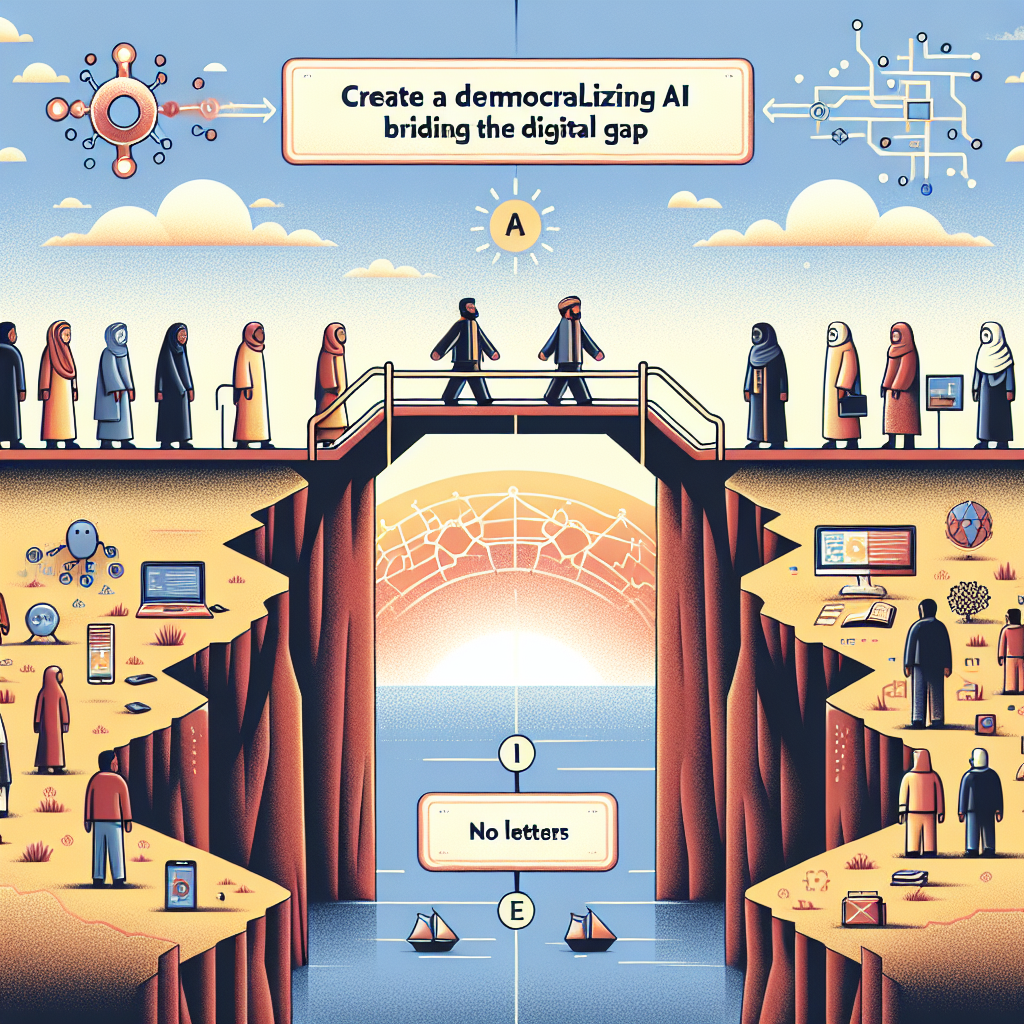In today’s digital age, artificial intelligence (AI) has become a powerful tool that is transforming industries and reshaping the way we live and work. From autonomous vehicles to personalized recommendations on streaming platforms, AI is being used in a wide range of applications to make our lives easier and more efficient. However, not everyone has access to this cutting-edge technology, creating a digital gap that can widen inequality and limit opportunities for many individuals and communities.
Democratizing AI is about bridging this gap and ensuring that the benefits of AI are accessible to everyone, regardless of their background or resources. By making AI more inclusive and equitable, we can empower individuals and communities to thrive in the digital age and unlock the full potential of this transformative technology.
One of the key challenges in democratizing AI is the lack of diversity in the tech industry. According to a report by the AI Now Institute, women make up only 18% of authors at leading AI conferences, and black and Latino researchers represent just 2.5% of the workforce at major tech companies. This lack of diversity not only limits the perspectives and experiences that are represented in AI research and development but also perpetuates bias and discrimination in AI systems.
To address this issue, companies and organizations need to prioritize diversity and inclusion in their AI initiatives, from hiring practices to data collection and algorithm development. By bringing in a diverse range of voices and perspectives, we can create AI systems that are more ethical, fair, and representative of the communities they serve.
Another challenge in democratizing AI is the digital divide, which refers to the gap between those who have access to digital technologies and those who do not. According to the Pew Research Center, 15% of Americans do not use the internet, with higher rates among low-income individuals, seniors, and rural residents. This lack of access to digital tools and resources can limit opportunities for education, employment, and social engagement, exacerbating existing inequalities.
To bridge the digital gap and democratize AI, we need to invest in infrastructure and resources that make technology more accessible and affordable for all. This includes expanding broadband access in rural and underserved areas, providing training and support for digital literacy skills, and ensuring that AI technologies are designed with the needs and priorities of diverse communities in mind.
One example of a successful initiative to democratize AI is the AI for Good Global Summit, organized by the International Telecommunication Union (ITU) and the XPRIZE Foundation. This annual event brings together AI experts, policymakers, and civil society organizations to discuss how AI can be harnessed for social good and address global challenges such as poverty, healthcare, and climate change. By fostering collaboration and innovation, the summit aims to ensure that AI benefits all of humanity, not just a privileged few.
In addition to industry-led initiatives, governments also play a critical role in democratizing AI and bridging the digital gap. For example, the European Union recently released a comprehensive strategy on AI that includes guidelines for ethical AI development, investment in AI research and innovation, and support for digital skills training. By setting clear standards and priorities for AI governance, policymakers can ensure that AI technologies serve the public interest and uphold democratic values.
Frequently Asked Questions about Democratizing AI:
Q: What is democratizing AI?
A: Democratizing AI is about making artificial intelligence more accessible and inclusive, so that everyone has the opportunity to benefit from its transformative potential. This includes addressing issues of diversity in the tech industry, bridging the digital gap, and ensuring that AI technologies are developed and deployed in ways that are ethical, fair, and representative of diverse communities.
Q: Why is democratizing AI important?
A: Democratizing AI is important because it can help to reduce inequality and empower individuals and communities to thrive in the digital age. By ensuring that AI technologies are accessible to everyone, we can unlock new opportunities for education, employment, and social engagement, and create a more inclusive and equitable society.
Q: How can we democratize AI?
A: There are several ways to democratize AI, including prioritizing diversity and inclusion in the tech industry, expanding access to digital tools and resources, and investing in AI initiatives that benefit the public good. By working together to address these challenges, we can ensure that AI serves the needs and priorities of all individuals and communities.
Q: What role can governments play in democratizing AI?
A: Governments play a critical role in democratizing AI by setting clear standards and priorities for AI governance, investing in AI research and innovation, and supporting digital skills training for all citizens. By working with industry and civil society, policymakers can ensure that AI technologies serve the public interest and uphold democratic values.
In conclusion, democratizing AI is essential for creating a more inclusive and equitable society in the digital age. By addressing issues of diversity in the tech industry, bridging the digital gap, and ensuring that AI technologies are developed and deployed in ways that benefit all individuals and communities, we can unlock the full potential of this transformative technology and empower people to thrive in the digital age. By working together to democratize AI, we can build a future where technology serves the needs and priorities of all individuals, not just a privileged few.

